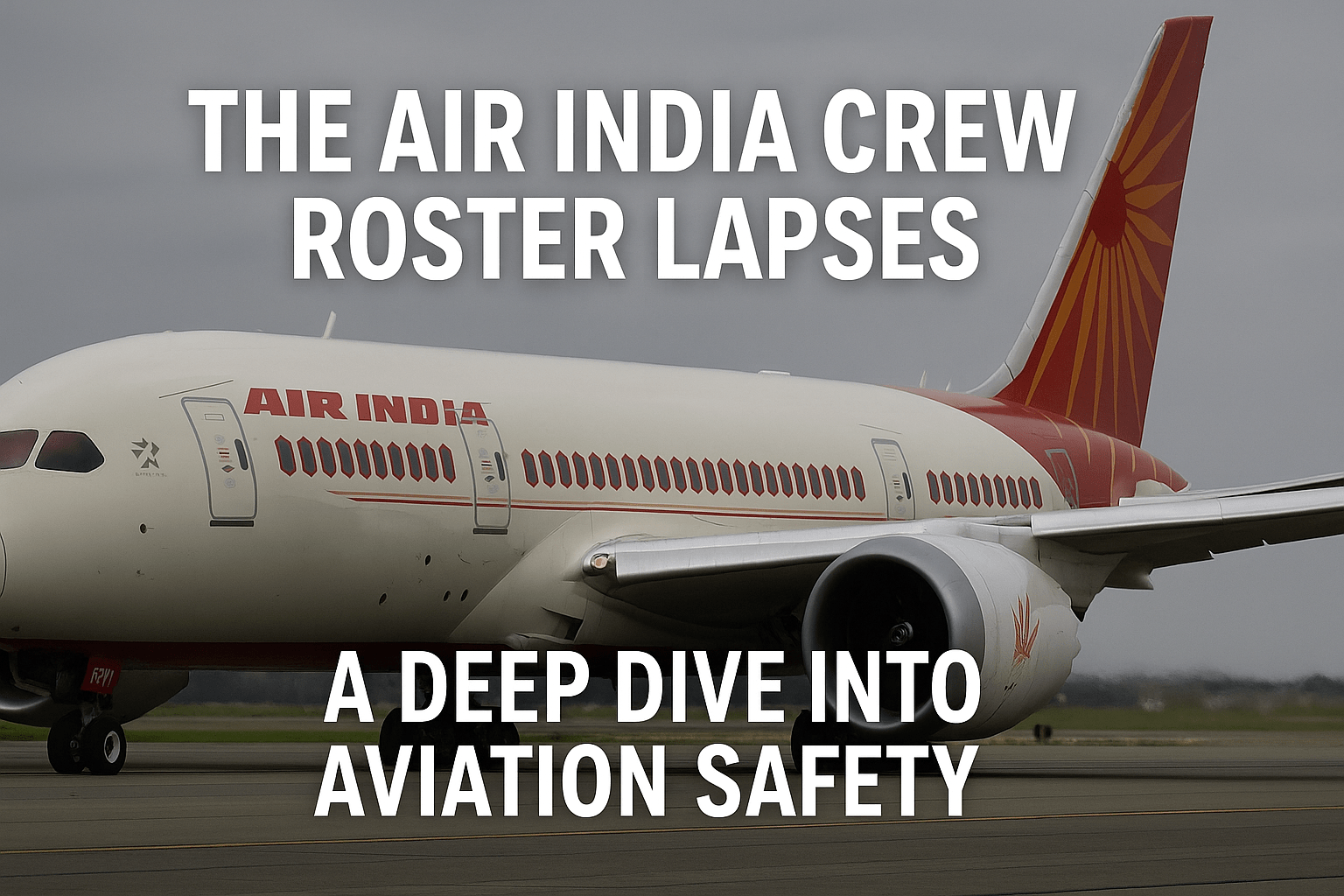Ever wondered what goes on behind the scenes to make sure your flight is super safe? We all trust airlines to get us from A to B without a hitch. But sometimes, even the biggest names have hiccups that make us pause and think. Recently, news about Air India and their crew rostering issues has been buzzing. It might sound technical, but trust us, it’s a big deal for everyone who flies!
Let’s dive deep into what happened, why it’s serious, and what it means for the future of flying.
The Big Buzz: What Exactly Were These “Lapses”?
Okay, imagine you’re a pilot or a flight attendant. Your job is incredibly demanding, and you’re responsible for hundreds of lives. Now, picture being asked to work when you’re super tired, or without proper breaks. That’s essentially what “crew rostering lapses” are about.
It means the way Air India was scheduling its flight crews wasn’t always following the rules. These rules are there to make sure pilots and cabin crew get enough rest. Think of it like this: if you pull an all-nighter, are you at your best for a big test or a crucial task? Probably not! It’s the same for flight crews, but with much higher stakes.
Why Is Crew Rest Such a Big Deal? (Hint: It’s About Safety!)
This isn’t just about being a little sleepy. When pilots and cabin crew are fatigued, their reaction times slow down, and their ability to make quick, critical decisions can be affected. In aviation, every second counts.
- Pilot Focus: Pilots need to be sharp and alert for every part of the flight – takeoff, cruising, and especially landing.
- Cabin Crew Readiness: Flight attendants are your safety experts in the cabin. They need to be well-rested to handle emergencies, assist passengers, and ensure everyone’s well-being.
So, proper rest isn’t just a comfort; it’s a non-negotiable safety requirement. When those rules are bent or broken, it directly impacts flight safety.
DGCA Steps In: The Guardians of Our Skies
Thankfully, there’s a watchdog keeping an eye on things: the Directorate General of Civil Aviation (DGCA). They are India’s main authority for civil aviation, and their job is to make sure airlines follow all the safety rules.
When the DGCA found out about Air India’s rostering issues, they didn’t just shrug. They took serious action:
- Warning Issued: First, they gave a stern warning to Air India, telling them to fix things immediately.
- Officials Removed: They even ordered some key officials responsible for these schedules to be removed from their posts. This shows how seriously they take violations of safety norms.
- Close Watch: The DGCA made it clear they would keep a very close eye on Air India to ensure these lapses don’t happen again.
This kind of swift action is actually a good sign! It shows that regulators are actively working to keep our flights safe.
What This Means for You: Flying with Confidence
Hearing about such issues can be a bit unsettling. But here’s the reassuring part: the system is designed to catch these problems and fix them.
- Vigilant Regulators: The DGCA’s quick response proves that there are strong checks and balances in place. They are constantly monitoring airlines to ensure compliance with safety standards.
- Lessons Learned: Every incident, big or small, becomes a learning opportunity for the entire aviation industry. Airlines are forced to review their procedures and make them even more robust.
- Continuous Improvement: Aviation safety isn’t a static thing; it’s a never-ending journey of improvement. Incidents like these lead to stricter rules and better enforcement.
So, while vigilance is always good, you can still feel confident when you step onto a plane. The focus on safety is incredibly high.
Beyond Rostering: A Glimpse at Overall Aviation Safety
It’s easy to just focus on one incident, but air travel remains one of the safest ways to travel. This is thanks to a combination of factors:
- Strict Regulations: Global and national bodies set incredibly high standards.
- Advanced Technology: Modern planes are packed with incredible safety features.
- Highly Trained Professionals: From pilots and cabin crew to ground staff and air traffic controllers, thousands of dedicated individuals work tirelessly to ensure safe operations.
- Rigorous Maintenance: Aircraft undergo frequent and thorough inspections and maintenance.
Every single one of these elements plays a vital role in ensuring your journey is smooth and secure.
The Road Ahead: Building an Even Safer Sky
The Air India rostering issue highlights that even well-established airlines need constant oversight. It’s a reminder that safety is a priority that can never be compromised. The good news is that the systems are in place to address such challenges.
As the aviation industry continues to grow in India, the commitment to safety will only strengthen. So, next time you’re flying, remember the unseen heroes and the robust systems that work hard every day to get you to your destination safely. And trust that even when issues arise, they are swiftly addressed to keep our skies secure.
Happy travels!








Leave feedback about this